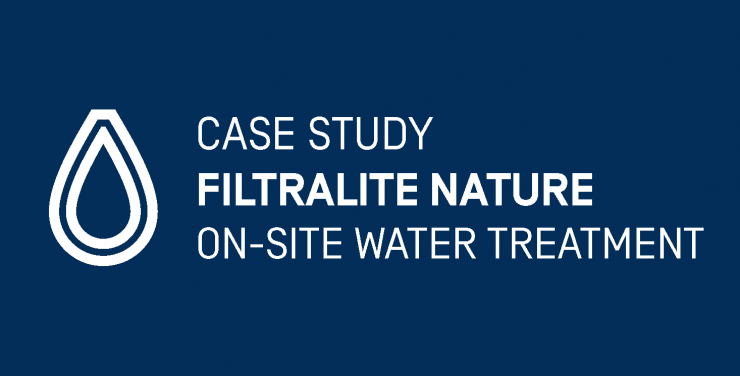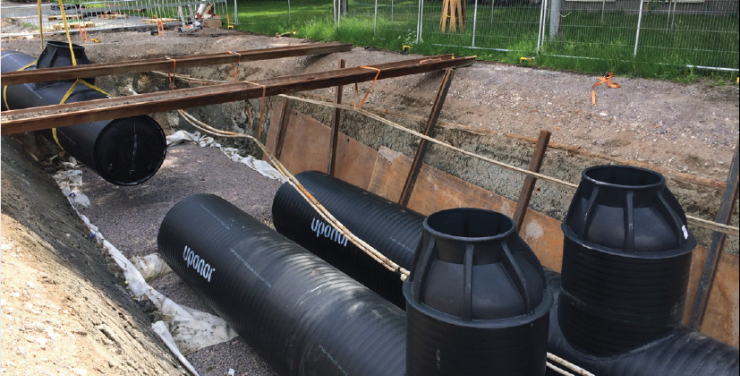A Complete Filter Solution to Retain and Treat Stormwater Developed in Sweden (Case Study)
Published on by Water Network Research, Official research team of The Water Network in Case Studies
 As knowledge about stormwater and its pollution increases, higher demands are made for more efficient treatment of, among other things, oil, phosphorus, and heavy metals.
As knowledge about stormwater and its pollution increases, higher demands are made for more efficient treatment of, among other things, oil, phosphorus, and heavy metals.
At the same time, heavy rainfall and more extreme weather increase the need for water retention. This is especially true in fast-growing urban areas where the soil is being replaced by impervious areas.
A combined solution for managing water quality and volume
By combining two proven methods, Filtralite has, in collaboration with WEREC Water Ecosystem Recovery, developed a solution that provides effective removal of contaminants while providing storage capacity.
Investment costs are low compared to conventional solutions as well as operating costs as the concept is completely passive.
Filtralite® P retains suspended solids, phosphorus and heavy metals, the high porosity of the material providing a significant storage capacity
Depending on the local conditions, the filter can be installed as a cassette solution or as a filter bed.
The filter bed solution is designed for conditions where there is access to park areas or an unpaved surface, adjacent to the impervious surfaces, which allows for material exchange with an excavator. In more urban environments, the cassette solution can be lowered down underground and material exchange takes place through the installed manhole covers using a vacuum truck.
The solution is designed according to WEREC’s filter technology, which provides a high degree of water treatment and a life span of at least 10 years. After this period the filter material is simply replaced. WEREC's technology ensures optimal flow and contact time, all based on the conditions of the catchment area. Dimensioning also takes into account the regulation of maximum permissible limits, set by the municipality.
Oil compounds are separated in a pre-filter, consisting of an organic filter media. The pre-filter further contributes to metallic separation. This filter is also designed with WEREC's technology.

Images by Filtralite
A solution easy to implement for municipalities
Many municipalities are now planning their water management strategies to cope with increased flows in a future climate. The filter beds or cassettes can be dimensioned to contribute to retention capacity, for example, with volumes of 1-2 year flows or even more.
Cleaning effect and storage capacity
The following table shows examples of various pollutants removal, measured on actual stormwater over a period of 6 months. The values may vary depending on incoming levels of contamination, contact time, etc. The filter can be dimensioned to increase separation even further.
| Substance | Total phosphorus | Phosphate | Chromium | Copper | Nickel | Lead | Zinc |
|---|---|---|---|---|---|---|---|
| Reduction % | 63,4 | 59,9 | 67,0 | 64,2 | 64,7 | 79,2 | 92,9 |
When dimensioning the filter to typical municipal limits in terms of metals and phosphorus, the installation has a storage capacity equivalent of approximately 60% of a six-month rain for 10 minutes and 40-50% of a one-year rain. With that size, the filter provides a significant storage capacity which contributes to an even flow downstream. The installation can also be dimensioned to store a one-year rain completely, or a two-year rain (about 8 mm in 10 minutes).
Media
Taxonomy
- Treatment
- Technology
- Filters
- Clean Tech
- Stormwater Management
- Stormwater
- Water Storage
- On-site Treatment